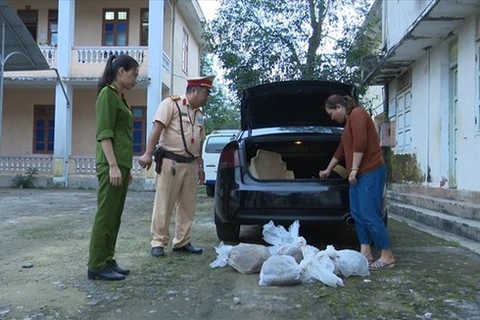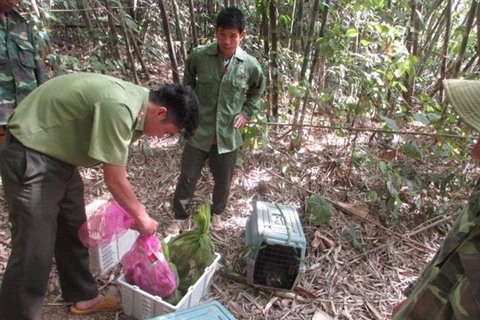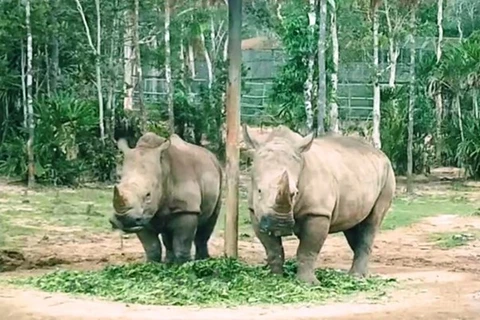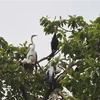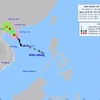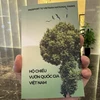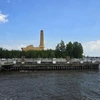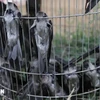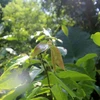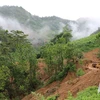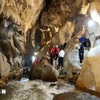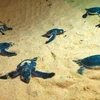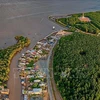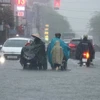 Cat Ba archipelago in the northern city of Hai Phong has been seen as a “hot spot” in the poaching of migratory wild birds over the past two decades. (Photo: VietnamPlus)
Cat Ba archipelago in the northern city of Hai Phong has been seen as a “hot spot” in the poaching of migratory wild birds over the past two decades. (Photo: VietnamPlus) Hanoi (VNA) – The Nature and Biodiversity Conservation Agency (BCA) is completing a draft directive of the Prime Minister on strengthening the management of migratory wild birds in Vietnam, which will be submitted to the Government for approval.
The move is to cope with the complexity of the poaching of migratory wild birds in many localities, especially Cat Ba archipelago in the northern city of Hai Phong that has been seen as a “hot spot” in this regard over the past two decades.
Deputy director of the agency Hoang Thi Thanh Nhan told VietnamPlus that the hunting and consumption of migratory birds have been detected in a number of localities over the past time, damaging biodiversity and the environment, presenting a risk from epidemics, and affecting the performance of international commitments in the East Asian-Australasian Flyway Partnership (EAAFP), to which Vietnam is a member.
It is an urgent need to prevent and stop the hunting of migratory wild birds, she stressed.
To prepare for the draft directive, the agency recently held a technical meeting with bird preservation experts and representatives from the World Wide Fund for Nature (WWF) and VietNature to discuss measures to protect wild birds, especially migratory birds.
After completing the document, the Ministry of Natural Resources and Environment is scheduled to send it to the Government for consideration and approval in the first quarter of this year, according to Nhan.
 Cat Ba sea has 300 species of fish, 500 species of molluscs and crustaceans, many of which are of high economic and scientific research value. (Photo: VietnamPlus)
Cat Ba sea has 300 species of fish, 500 species of molluscs and crustaceans, many of which are of high economic and scientific research value. (Photo: VietnamPlus) Last year, VietnamPlus published three reportages on the illegal hunting and trading of wild animals, mostly birds, in many localities, particularly the central province of Thanh Hoa and the southern province of Long An.
The Ministry of Agriculture and Rural Development then sent documents to the localities, asking them to take measures to put an end to the problem.
The Chairperson of the Long An Provincial People’s Committee convened an urgent meeting, during which relevant departments and agencies were tasked with investigating and handling violations.
Last November and December, the newspaper also reported the illegal hunting and trading of migratory birds in Cat Ba archipelago, with hundreds of wild birds, including those included in the “red list”, being killed each night.
The deeds have pushed many migratory birds, notably rare ones, on the edge of extinction, affected biodiversity and presented risk of disease transmission from animals to humans.
Given this, the Ministry of Agriculture and Rural Development and the Ministry of Natural Resources and the Environment have instructed relevant agencies to work with the People’s Committee of Hai Phong city on the matter.
The Prime Minister has also requested the Ministry of Agriculture and Rural Development, and the Hai Phong City People’s Committee to take measures against the violations, especially on the Cat Ba archipelago that was officially recognised by UNESCO as a world biosphere reserve in 2004.
Hai Phong's authorities have urged relevant departments, agencies, and units to determine the responsibility of individuals and collectives regarding the issue.
Bui Thi Ha, Vice Director of Education for Nature Vietnam, said that to curb and prevent illegal hunting, a combination of measures is needed, including better communications, increased public understanding, and an improved legal framework and better law enforcement.
“Asking people not to hunt wild birds and remove trapping nets is not enough,” she said. “Strict punishment of violators is needed. People must be shown the legal penalties they face if they are involved in illegal wild bird hunting and trading.”/.
| The Cat Ba World Biosphere Reserve covers a total area of 26,240 ha, 30 nautical miles from Hai Phong city. Together with Ha Long Bay, it forms an interesting island-bay complex. It can be said that Cat Ba is a major biodiversity centre in Vietnam. According to the initial investigation, there are 620 species of high-level plants of 438 genera and 123 families, including those currently only found in Cat Ba such as Nageia fleuryi, Madhuca pasquieri, Chukrasia tabularis, Cinnamomum parthenoxylon, and Smilax glabra. There are 32 species of mammals, 69 species of birds and 20 species of reptiles and amphibians. Many of them have been identified as particularly rare species named in the International Union of Conservation of Nature (IUCN) Red List of Threatened Species such as white-headed langur, chamois, otter, leopard, wild cat, civet, and black squirrels. Especially, the white-headed langur (Trachypithecus francoisi polyocephalus) is endemic to Cat Ba. Besides mammals, many precious birds are also seen here, including coot, babbler and cuckoo. Cat Ba sea has 300 species of fish, 500 species of molluscs and crustaceans, many of which are of high economic and scientific research value. |
